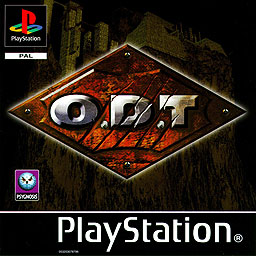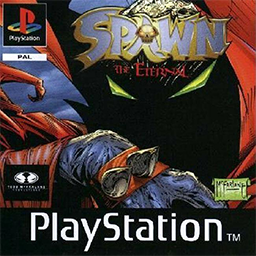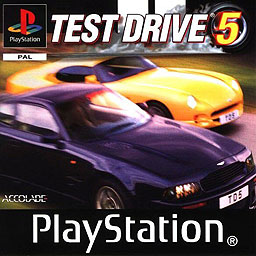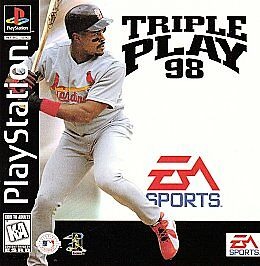
Darkstone: Evil Reigns is an action role-playing video game developed by Delphine Software International for Microsoft Windows and PlayStation. In 2014, the French publisher Anuman Interactive launched a remake available on iPad, iPhone and Android, with the cooperation of the original game's author Paul Cuisset.

Ian Livingstone's Deathtrap Dungeon is an action-adventure video game developed by Asylum Studios and published by Eidos Interactive for PlayStation and Microsoft Windows in 1998. It is based on the adventure gamebook Deathtrap Dungeon written by Ian Livingstone, and published by Puffin Books in 1984.

Moto Racer, mislabeled as Moto Racer Gold, is an arcade style motorcycle racing game developed by Delphine Software International and published by Electronic Arts for Microsoft Windows and PlayStation. The game was originally to be published by BMG Interactive, but after BMG closed down its U.S. operations it sold the publication rights to Electronic Arts. Critics hailed the game as the first outstanding arcade-style racer to appear on PC, and the PlayStation version in turn was called a strong conversion in reviews.

Nightmare Creatures is a 1997 survival horror video game developed by Kalisto Entertainment for PlayStation, Windows, and Nintendo 64. A sequel, Nightmare Creatures II, was released three years later. A mobile phone version of Nightmare Creatures was developed and published by Gameloft in 2003. A second sequel, Nightmare Creatures III: Angel of Darkness, was cancelled in 2004.

FIFA 99 is a football simulation video game developed by EA Canada and published by Electronic Arts under the EA Sports label. It is the sixth game in the FIFA series and was released in 1998 for Microsoft Windows, PlayStation and Nintendo 64.

Tomb Raider: Chronicles is an action-adventure video game developed by Core Design and published by Eidos Interactive. It was first released for PlayStation, Windows, and Dreamcast in 2000, then on Mac OS the following year. It is the fifth instalment in the Tomb Raider series. The narrative continues from Tomb Raider: The Last Revelation with archaeologist-adventurer Lara Croft presumed dead, and three friends recall adventures from her early career. Gameplay follows Lara through linear levels, solving puzzles and fighting enemies. Some levels incorporate additional gameplay elements such as stealth.

Tomb Raider: The Last Revelation is an action-adventure video game developed by Core Design and published by Eidos Interactive. It was first released for PlayStation and Microsoft Windows in 1999, then on Dreamcast and Mac OS the following year. It is the fourth instalment in the Tomb Raider series. The narrative follows archaeologist-adventurer Lara Croft as she races to imprison the Egyptian god Set after accidentally setting him free. Gameplay features Lara navigating levels split into multiple areas and room complexes, fighting enemies and solving puzzles to progress.

Tomb Raider III is an action-adventure video game developed by Core Design and published by Eidos Interactive. It was released for the PlayStation and Microsoft Windows platforms in 1998. Tomb Raider III is the third title in the Tomb Raider series and a sequel to Tomb Raider II. The story of the game follows archaeologist-adventurer Lara Croft as she embarks upon a quest to recover four pieces of a meteorite that are scattered across the world. To progress through the game, the player must complete a series of levels that involve solving puzzles, traversing dangerous locations, and defeating enemies.

O.D.T. is a 1998 action-adventure video game developed by FDI and published by Psygnosis for PlayStation and Microsoft Windows.

Tomb Raider is a 1996 action-adventure video game developed by Core Design and published by Eidos Interactive as the debut entry in the Tomb Raider media franchise. It was first released on the Sega Saturn, followed shortly by versions for MS-DOS and the PlayStation. Later releases came for Mac OS (1999), Pocket PC (2002), N-Gage (2003), iOS (2013) and Android (2015). The game follows archaeologist-adventurer Lara Croft, who is hired by businesswoman Jacqueline Natla to find an artefact called the Scion of Atlantis. Gameplay features Lara navigating levels split into multiple areas and room complexes while fighting enemies and solving puzzles to progress. An expansion pack subtitled Unfinished Business was released in 1997, containing new standalone levels.

Spawn: The Eternal is an action-adventure video game developed by Sony Interactive Studios America and published by Sony Computer Entertainment for the PlayStation. It is based on the comic book character Spawn created by Todd McFarlane and published by Image Comics. It was released on December 9, 1997 in North America and received negative reviews from critics. When played on a CD player, the disc plays a lengthy audio interview with Todd McFarlane.

NHL 99 is an ice hockey video game developed by Electronic Arts Canada. It was released in September 1998 and was the successor to NHL 98.

Test Drive 5 is a racing game developed by Pitbull Syndicate and published by Accolade for PlayStation and Windows in 1998, and by Capcom in Japan in 1999.

Test Drive Off-Road is a racing video game developed by Elite Systems and published Accolade for Microsoft Windows and PlayStation.

Test Drive 4X4 is a racing video game co-developed by Accolade's internal development team and Pitbull Syndicate, and published by Accolade for PlayStation and Microsoft Windows.

NCAA Football 99 is a sports video game released by EA Sports in 1998, the 1999 installment of its college football game series. The cover features University of Michigan cornerback Charles Woodson.

The City of Lost Children is an adventure game developed and published by Psygnosis in 1997. It is loosely based on the film of the same name. The game was released for the PlayStation and MS-DOS. The latter is a straight port of the console version. Players take on the role of the film character Miette.
NCAA Football '98 is a video game of the sports genre released in 1997 by Electronic Arts. The game featured University of Florida quarterback and Heisman Trophy winner Danny Wuerffel on the cover.

Tomb Raider II is a 1997 action-adventure video game developed by Core Design and published by Eidos Interactive. It was first released on Windows and PlayStation. Later releases came for Mac OS (1998), iOS (2014) and Android (2015). It is the second entry in the Tomb Raider series, and follows archaeologist-adventurer Lara Croft hunting the magical Dagger of Xian in competition with an Italian cult. Gameplay features Lara navigating levels split into multiple areas and room complexes while fighting enemies and solving puzzles to progress, with some areas allowing for or requiring the use of vehicles.

Triple Play 98 is a baseball sports video game which was released in 1997 on the PlayStation and Microsoft Windows. The game was developed and published by EA Sports, and the next entry in the Triple Play series after Triple Play 97. The cover of the game features St. Louis Cardinals player Brian Jordan.



















